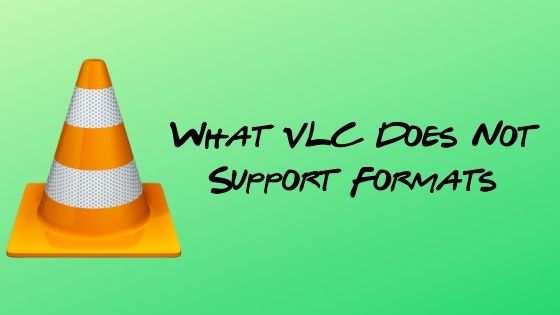VLC player. An acronym now etched in our vocabularies for its ease of use and near omnipresence in the tech world. Known anciently as the VideoLAN Client, the VLC player is considered a free and open-sourced media player for operating systems including Microsoft Windows, macOS, and Linux. With its peak capacity to play almost any video, audio, and even stream DVD movies, it is considered the best on class, pocket-friendly and universal tool for one’s audio-visual needs. With its in-built codecs or the computer program /device that helps in encoding or decoding a signal or a data stream, zero cost, and a wide variety of other features, the VLC player stands tall amidst its competitors. This page about VLC formats will increase your knowledge on the topic.


Some stellar features of the same also include its ability to support various file types, including AVI, MKV, MP3, amongst many others. The options to add subtitles, change the interface, and make necessary customizations are an additional joy while using the player. Amongst the array of alternatives with reference it licenses and platforms available, some other options that could affect the VLC player include Winamp, KMplayer,s among many others.
Despite the VLC player getting only praises for its effortless and ease of access, features, and robust interface that it holds, many people have questioned the types of formats that VLC doesn’t support. The one drawback would essentially push the application down, so here is a deep dive! Upon extensive research, a form of codec that isn’t supported by this platform is the Indeo Video codec. This, again, could be for various codec-specific reasons.
The datagram congestion control protocol / real-time transport protocol is supported by VLC only on Linus, the SVCD, or the super video compact disk. For starters, the codec is proprietary, i.e., it is not freely available or universally accessible. This proves to be one of the biggest hindrances to its use too. Developed by the Intel architecture labs in 1992, it now stands as the property of Logos technology. But as of the beginning of 2020, the logos Indeo technology is no longer available, which may be a hindrance the VLC player may have conveniently dodged. A few other limits of the VLC player depending on the operating systems have also been found recently.
Unfortunately, only has partial support. The growth of new technology, too, has led the VLC player to find obstacles in its viewing capacity. The blu- ray, a new and emerging format that provides users an HD experience and more storage capacity providing an exquisite viewing experience and movie quality, is one such roadblock for VLC. Looking at input formats, you can play all except real media.
The multimedia container by RealNetworks is another popular one for internet streaming. It is often criticized for being a bit too invasive. The format isn’t just alien to VLC but many other multimedia players, with hardly a handful that support it. In the video format section, a VLC player user has the privilege to view and put to use various mediocre and even rare formats, with the Indeo video codec being left out of reach.
Finally, taking a peek at the audio formats, the actual audio as its input counterpart is the deal-breaker in the equation here. The SIPR codec here is not supported hence gaining the partially endorsed tag. Further, it also hasn’t been tested with the MIDI files or the Musical Instrument Digital Interface on the Mac.
This further opens up the platform for vulnerability due to the large Mac consumer base, the extent of MIDI usage, and its technical standards. One of the biggest problems faced is the UNDF format or the Undefined File Format, which stands undefinable or unrecognizable. In such cases, you cannot put it under any of the ones mentioned above due to its unrecognizable characteristics. However, increased research has shown that installing the Combined Community Codec Pack has helped resolve this issue. This further opens up the platform for vulnerability due to the large Mac consumer base, the extent
Despite the increase in technology, the VLC player, which dates back to 2009 or before, a student-made project, has made an effort to go forth and stay head-on concerning its competitors. With new links that help access the technology to make them compatible with each other and the research to make it all-inclusive, the VLC player still marks its presence in its field. With not a lot of credible information found on the web, the player is fending well for itself.
Often an inbuilt program on most devices and set as default, every child with a computer today depends on it for their A/V needs and now sands synonymous to the previously famous players, speakers, and other output devices. Tracing its history, the player indeed has had a great path. The introduction of the radio, followed by the individual patenting and inventing of the television, cassettes, etc., has all led to such technologies. The amalgamation of the devices that were once lone wolves on the red carpet of technologies now stands tall as the pack they are, the VLC player being the product of the same!















